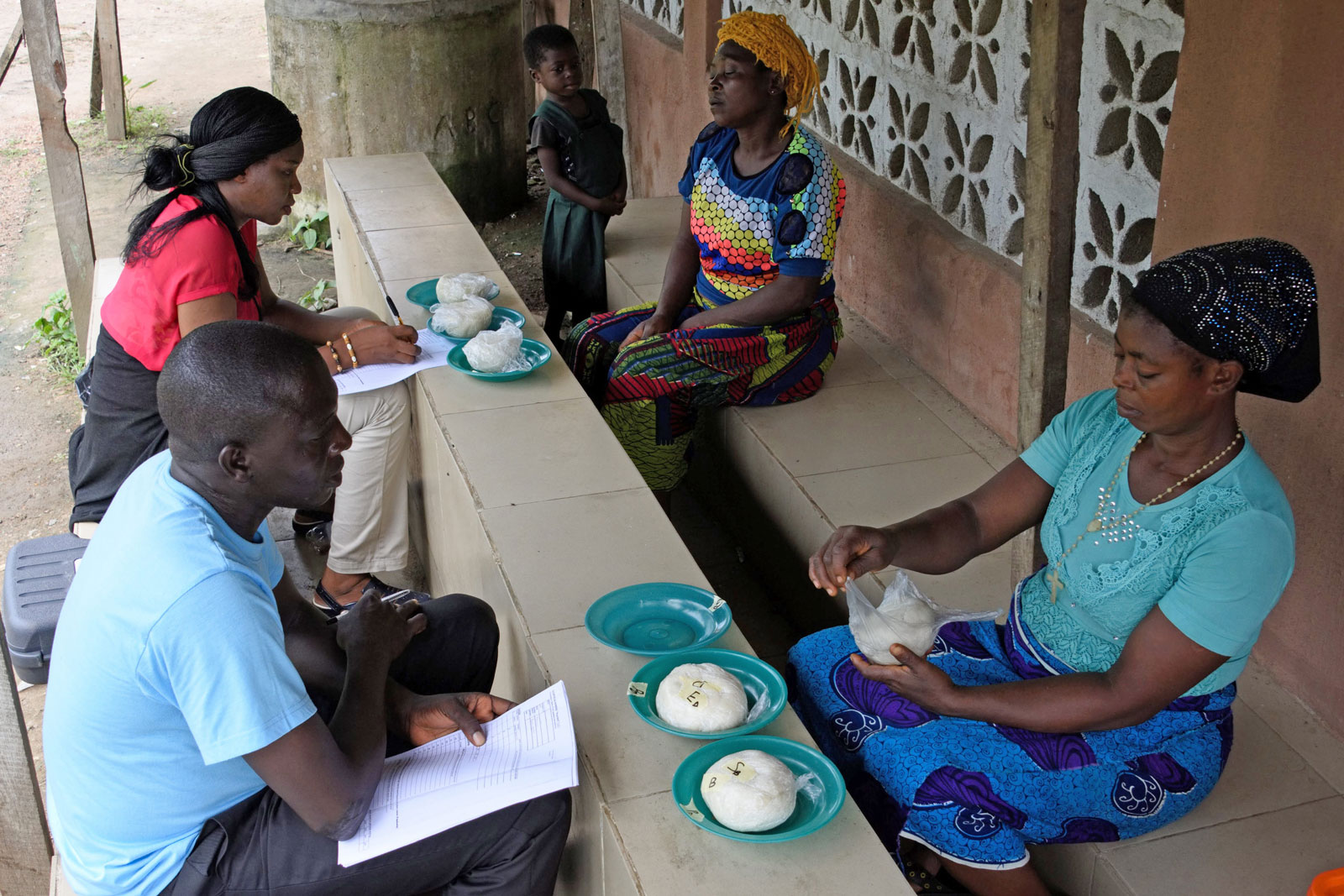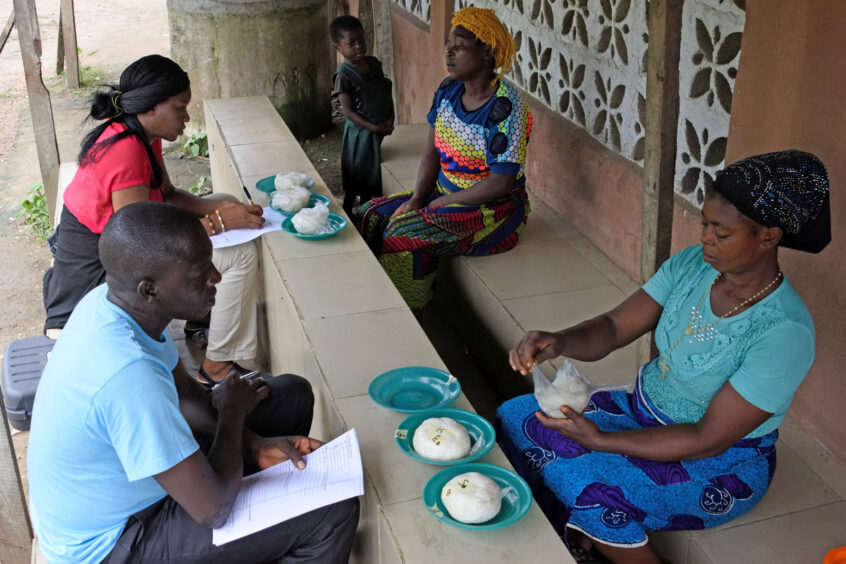The CIRAD-led project, RTBfoods, is finding innovative ways to satisfy consumer demand for new crop varieties. The approach organizes consumer preferences for quality characteristics into “product profiles” for food types and translates them into physical properties and genetic traits that plant breeders can measure and select for. Technologies like near-infrared spectroscopy (NIRS) help to measure those properties quickly to rapidly screen for them in a breeding program.

The people who grow, prepare, and eat foods made from root, tuber and banana crops have strong preferences, but breeding for the textures and flavors they like can be elusive. This is a major reason why the adoption of improved varieties is rarely higher than 40% of the crop’s area, as discussed earlier in this report.
CIRAD, a strategic partner of RTB, is leading a Bill & Melinda Gates Foundation funded project, RTBfoods, which is providing solutions. Teams working with food product profiles across all five crops use various tools to identify the qualities consumers want. Some of these preferred qualities translate into physical properties that breeders can select for. The findings will be used to screen for those traits early in the breeding cycle. If this process is completed, there’s great promise to create improved varieties which many people will like, leading to enhanced adoption.
A special 2020 issue of the International Journal of Food Science and Technology highlights a comprehensive method developed by RTBfoods to define the food “product profile”, that is, the end-users’ preferences for a specific food product:
Literature review and key informant interviews identify the state of knowledge and knowledge gaps in food science, gender, and markets, to focus research.
Gendered food mapping exercises, using statistically robust methods in communities to determine the qualities of varieties needed by men and women.
Demonstrations with champion processors to evaluate varieties during food preparation.
Consumer taste tests for foods made from different crop varieties.
A food product profile defining quality characteristics important for women and men along the food chain.
The special issue presents eight different product profiles which can have transformational impact on breeding work. However, RTBfoods realizes that defining the food product profile is just the first step in a process that moves breeding forward:
- Define the food product profiles.
- Link food product profiles to properties, like starch, pectin, and moisture, that can be assayed in the lab.
- Develop tools to rapidly screen for these properties early in the breeding cycle.
- Integrate the traits that consumers want into breeding programs.
- Evaluate the new varieties with consumers.

In Nigeria, IITA and partners crafted food product profiles by identifying traits of importance to rural consumers of pounded yam, a dough made from boiled tubers. People preferred pounded yam that is: stretchable, moldable, sticky, smooth, and moderately soft.
RTBfoods is pioneering methods to link such preferences with properties that breeders can screen for. For example, color preference in yam is easy to predict, and studies are ongoing to develop assays for stretchability. In cassava, water absorption and changes in relative density during boiling correlate with quick cooking time, which is important for cassava consumers. An operator can process up to 100 samples per day using these objective criteria.
Near infra-red spectroscopy (NIRS) quickly reads the infrared-light spectrum of uncooked (or cooked) lab samples of potato, sweetpotato, yam, cassava, or banana to simultaneously and quickly screen for diverse properties in a breeding program, such as starch, fiber or beta-carotene content as well as other compounds that could be of special interest, such as tannins or cyanogenic compounds.
“Breeders used to make crosses and then spend years selecting the best hybrids. NIRS will let breeders discard the unpromising offspring in the first seasons, to narrow in straightaway on the best candidates,” says Emmanuel Alamu of IITA.
SHARE THIS

